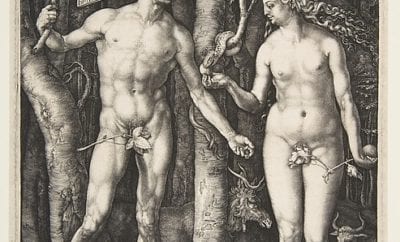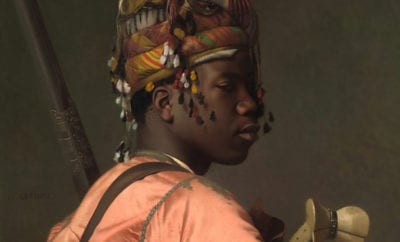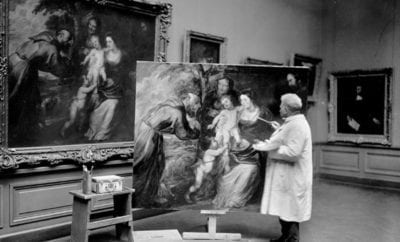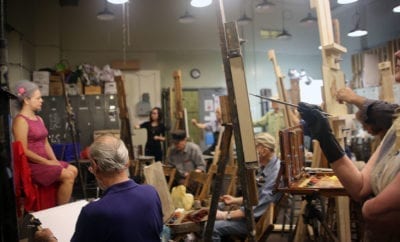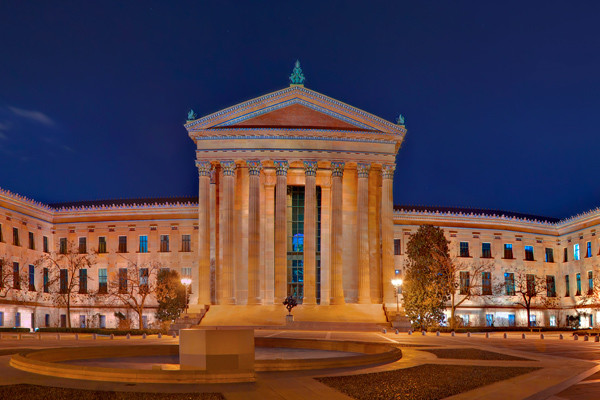
Making A Copy At The Philadelphia Art Museum

photo – G. Widman for GPTMC
The Philadelphia Museum of Art 2600 Benjamin Franklin Parkway
Philadelphia, PA 19130
Museums usually allow and even encourage artists to hone their skills by copying the masterpieces in their collections. Thousands have done so, including great classical painters from Turner to Ingres, Impressionists from Manet to Degas, and modernists like Chagall and Giacometti. “You have to copy and recopy the masters,” Degas insisted, “and it’s only after having proved oneself as a good copyist that you can reasonably try to do a still life of a radish.
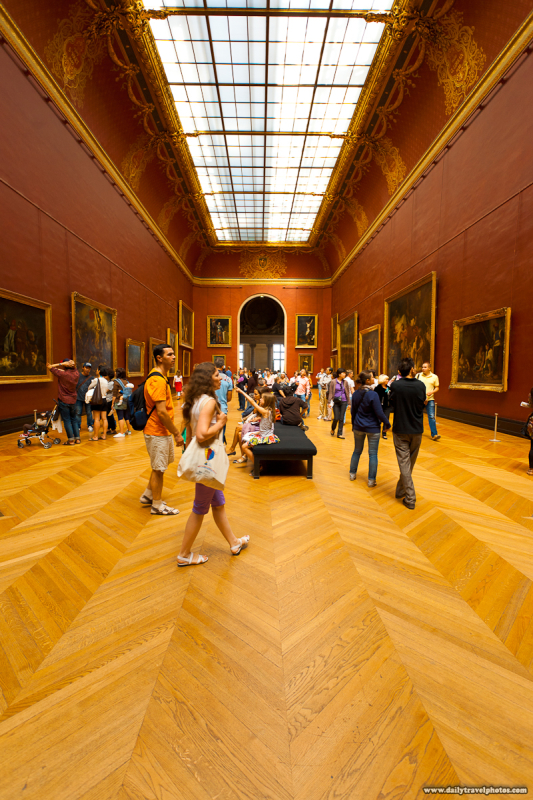
Inside the Louvre by The Daily Travel Photo
I’ve written in the past about my desire to make a copy of a great painting at the Louvre and the Musée d’Orsay. The last time I was in Paris, I went for an interview at the Louvre, submitted a portfolio of all my work, took 500+ photos deciding which five I would submit to the Copyist Department. I then made and went to another interview/appointment with the head of The Lourve copyist department; my portfolio was actually accepted. I made an appointment with the US embassy to get their part of the application filled out, but sadly never pulled the trigger and actually did it. Well, this time I pulled the trigger in my own back yard of Philadelphia with my friend and fellow painter Dr. Hal Shannis , at the Philadelphia Museum of Art.
To do this I first called the main number at the museum (215) 763-8100. The receptionist transferred me to Chris Wassel in the restoration department, who was very nice and helpful. He told us to visit the museum, pick a painting and then call Jason Little in the Education Department at the museum.

A vaulted hallway at the Philadelphia Museum of Art.
Hal and I took a day with our cameras and looked at literally everything in the museum. We then went home and picked our favorites. At the Louvre, the curator decides from the paintings you’ve chosen which one you can paint, so I narrowed my favorites down to five and sent them to my friend and mentor, Ricky Mujica, who thought Portrait of Emma Heart as Miranda by George Romney would be best. Although I thought this looked too easy, Ricky is usually right when it comes to anything art, so that’s what I picked.

George Romney, English, 1734 – 1802 Emma Hart, a beautiful woman of modest means, gained fame through her liaisons with English aristocrats. While married to Sir William Hamilton, British ambassador to Naples, she openly carried on a stormy romance with the naval hero Admiral Lord Nelson. In her youth she was one of Romney’s favorite models. She is shown here as Miranda, the heroine of Shakespeare’s Tempest, at the moment in act I, scene 2 when she begs her magician father Prospero to spare sailors shipwrecked in a storm he had raised.

Tintoretto (Jacopo di Giovanni Battista Robusti), Italian (active Venice), 1519 – 1594 This dramatically intimate self-portrait announced the arrival of a new talent on the Venetian art scene; Tintoretto painted it when he was just beginning his career. The picture follows the Venetian portraiture tradition of showing the subject’s head emerging from a dark background and making the eyes the focus of attention.
Hal picked a beautiful painting called Tintoretto by Jacopo di Giovanni Battista Robusti. After telling Jason about our choices, he sent us the Copyist Permission Form to fill out, and, once approved by the curator, we were in! Yay!! Copyist Permission form (letterhead version) There were only two small conditions. Hal had picked a painting that was in a higher trafficked area, which meant he could not paint more than twice a week. Also, we were told we could not paint on the weekends.
Shelli Alford is an artist and author, who enjoys learning from master oil painters from around the world and reviewing their classes, workshops and demonstrations.
Get great posts like these in your inbox!
Enter your email and we'll send you new posts when they are published. It's that simple!
We promise to never sell or distribute your email addresses. Your privacy is safe with us.



